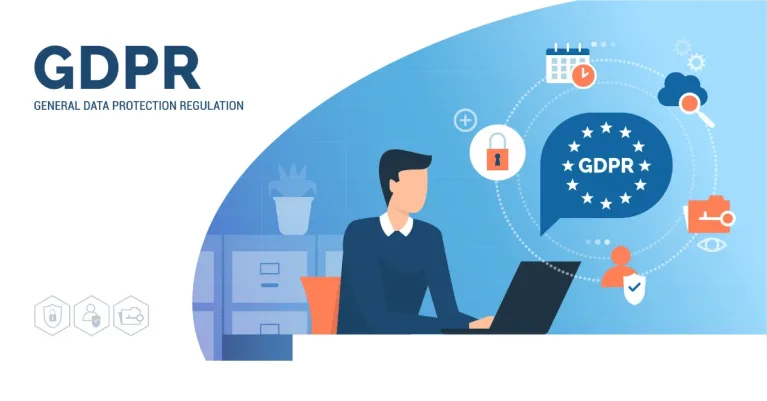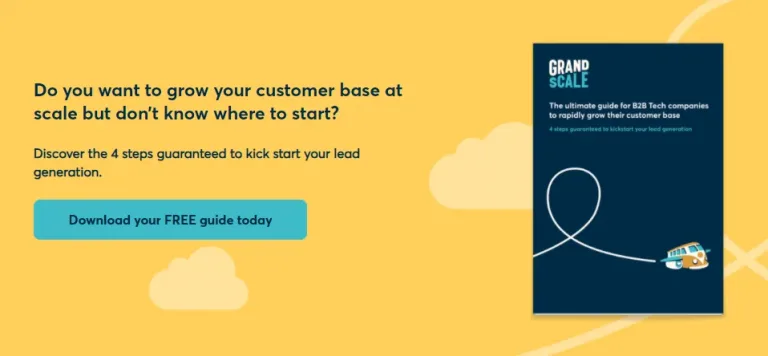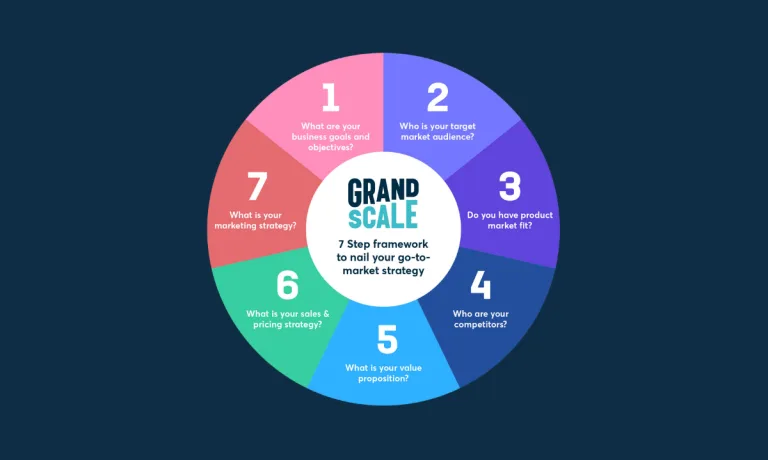
Why Your Prospecting Isn't Generating Quality Leads
The constant headache for every B2B sales and marketing team is how to find volumes of prospects and convert them to new customers. To achieve business growth, B2B tech companies need – not a slow drip of leads into the sales funnel – but a flood of quality prospects moving through the funnel to deliver a sustainable pipeline of hot leads for sales to convert to customers.
Without effective prospecting a company cannot achieve the sales it needs to grow. Prospecting ignites the whole sales process, but it’s also one of the most difficult steps to get right.

After you’ve exhausted your network and reached the last page of your black book where do you turn to find that flood of new prospects?
Maybe you’ve tried different approaches and are wondering why they don’t work. We’re here to tell you, and to share what does work.
1. Blanket advertising
Talking to everyone in the hope that somebody out there will be interested in what you’re selling is, to be blunt, a fool’s game. You’ll waste your (likely limited) marketing budget and get the lowest return on your investment. In this scenario, you don’t know who your prospects are and they don’t know who you are. Not exactly a recipe for success.
2. Cold calling
The age-old sales technique of cold-calling prospects is actually the most ineffective use of a salesperson’s time. What are the chances that the person who answers the phone will be the key decision-maker and that the phone call will come at the exact minute they are poised to buy a product just like yours? Slim. Moreover, you risk antagonising potential customers by interrupting their day.
3. Taking a scattergun approach
Firing out information to the world at large now and then won’t deliver the results you need. Firstly, not all prospects are created equal. There is no point chasing a prospect that has no awareness of your brand, no interest in your product and no reason to buy from you.
Secondly, it’s a tactical move – a one-off or sporadic outreach that isn’t part of a marketing strategy has little chance of success. This kind of cold outreach can’t deliver a high volume of warm leads.
50% of sales time is wasted on unproductive prospecting (Hubspot)
How to Prospect Successfully
Effective prospecting is the cornerstone of business success, so you need to devote time, effort and resources to it. You need to take a systematic approach, using a proven formula, powered by marketing automation tools.
Here are some key points to remember:
1. Volume Game
The first thing you need to know is that prospecting is a volume game. Simply put, the more prospects you pull into the top of your sales funnel, the more sales you’ll get out the bottom.

2. Right People – Identify and Define your Ideal Customer
Which brings us to the most important thing you need to know. Who is your ideal customer? What type of companies are most profitable for your business and who are the people within them that will champion your company and product?
These ‘champions’ are the prospects that you should be initially targeting. Later, your prospecting strategy will extend to include others that make up the full decision-making unit within those companies, people that influence whether to purchase your product or a competitor’s product.
So let’s focus on identifying who your ideal customer champion is for a specific product and define them in as much detail as possible. Knowing their demographics, job titles, industry/companies, keywords etc will ensure that you’re laser-focused on sourcing contact details for volumes of the ‘right people’.
3.Volumes of Prospects – 3 Strategies to Prospect at Scale
Armed with your ‘champion’ criteria and keywords, prospecting at scale involves a combination of three powerful strategies:
Strategy 1: Bought Lists – Tactical approach to get up and running
Building a list is time consuming, whereas bought lists provide a rapid boost to your sales. But it’s not without risk – a poor quality list can result in your domain being blacklisted and damage your reputation. And this approach may also prove unsuitable for niche markets.
Take measures to ensure that you’re purchasing a high quality, verified list that accurately matches your ‘champion’ criteria. It’s always prudent to ask for a sample to validate before you buy.
Strategy 2: Prospecting Tools – Sustainable approach to prospecting at scale
There is a plethora of subscription-based prospecting tools to meet the needs of every business; the trust pilot of tech – G2 – is a good source to find out which suits you best.
Lead intelligence tools allow you to capture contact information for volumes of prospects on a sustainable monthly basis using your search criteria and keywords that can include the technologies they use. You can also identify companies that visit your website and use lead intelligence tools to source the ‘right people’ within them. These leads are warm (not hot) as they already know who you are and what you do.
Buyer intent tools work differently – they can be based on social listening or content search monitoring. Again, you define your criteria and use these tools to source volumes of potential buyers actively seeking a solution like yours.
Strategy 3: Inbound Marketing – Organic approach to lead generation
Inbound marketing, described by Hubspot as a strategy that attracts customers by creating valuable content and experiences, uses multiple forms of pull marketing to grow your business by building meaningful lasting relationships with prospects and customers. This strategy relies on content marketing, SEO, social and aims to ‘pull’ potential customers to your sales-optimised website.
It’s an organic lead generation approach and is undoubtedly highly effective for attracting, engaging and delighting prospects and customers. However, it’s often too slow to generate the volume of prospects needed by companies seeking to rapidly build brand awareness and grow their customer base at scale. But used in conjunction with the supercharged push approach via bought lists and/or prospecting tools, it will help you achieve even ambitious growth targets.
IMPORTANT - Ensure you comply with GDPR regulations contacting only work emails.

4. Right Message – Share Content that Converts
Developing a content strategy to convert relies on your ability to really get to the heart of what makes your ideal customer tick – specifically, you need to understand their goals, challenges and any objections to adopting your company and product.
To move prospects through your sales funnel you need to engage with them systematically, nurturing them throughout their buyer journey with targeted, quality content. It’s about building brand awareness, credibility and trust, giving them something of value before you ask them to buy Read more about how to create killer content that converts prospects to loyal customers in our latest blog.
5. Right Time – Marketing Tools and Technology
Email marketing, supported by a complementary social strategy, drives traffic to your website and warms leads for your sales team. It is a powerful, repeatable marketing approach, designed to engage leads and systematically move them through the sales funnel.
To be able to move a high volume of prospects through your sales funnel, track their engagement with your content (email, website and social) and deliver content at the right time, you need to invest in marketing automation software. Learn how to accelerate business growth using the power of marketing automation in our blog.
6. Optimise your Owned Channels – Website and Social
Social selling is especially important for B2B businesses. 82% of buyers claim that they look up vendors on LinkedIn before replying to their outreach efforts. Support your email lead generation campaigns with a complementary social strategy. If you position your company as an expert on the social channels your prospects are looking at, you’ll build brand awareness and maximise your lead generation efforts.
Make sure your website is sales-optimised so that every prospect that visits has a clear path for their buyer journey and their interactions and contact details can be captured for tracking and follow-up. Make it stick. This means providing valuable content that resonates in exchange for their contact details, via lead capture forms.
--
To summarise: super-targeted prospecting at volume, underpinned by content that converts and powered by marketing automation, will supercharge your sales and fuel business growth.
Download The ultimate guide for B2B companies to rapidly scale their customer base to learn how to systematically engage with a significant volume of high value leads, nurture them through automated marketing and generate a sustainable pipeline of potential customers for your business.



